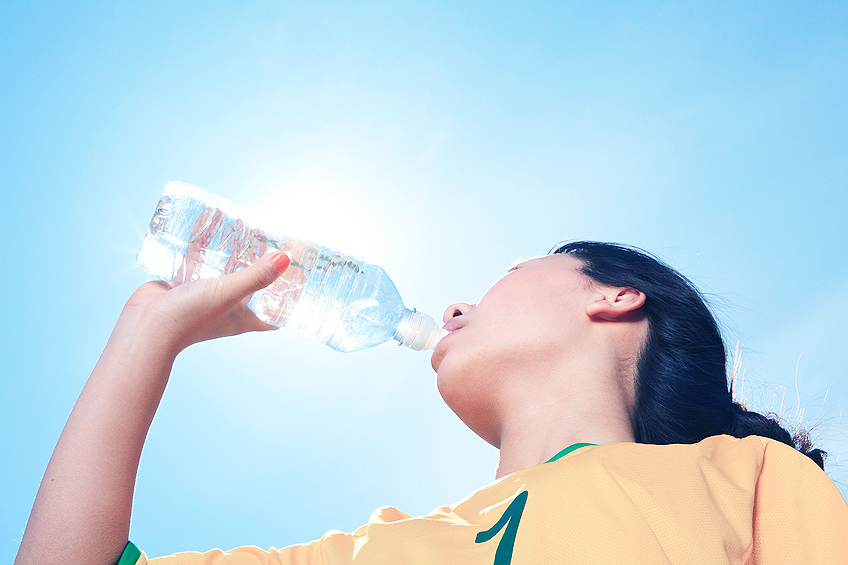We usually see fall sports kick into high gear by late August, early September. Kids returning from summer vacation are often immediately thrown into high-intensity activities that often happen in very hot temperatures. Everyone always dreads “two-a-day” practices! These aren’t as common as they used to be, but still occur in some sports. The addition of high levels of activity and hot temperatures can put kids at risk for dehydration and heat illness. Parents and coaches must be aware of how to keep young athletes hydrated and to recognize the signs of heat injury.
Here are a few tips for hydration for all athletes, young and old:
- Hydrate before, during, and after! Getting in enough fluid during all of these times is key. Athletes should begin hydrating several hours before practice or games. They should have a water bottle handy or access to water during practices and drink every 15-20 minutes. After practice or games, the goal is to replace all of the fluid that was lost. A good rule of thumb is 20-24 oz for every pound lost.
- Water is the best choice if activity is less than 60 minutes. Activities under 60 minutes do not deplete electrolytes enough to require a sports drink like Gatorade. If practice or games go beyond the one hour mark, you can use an electrolyte/carbohydrate-containing drink to replace electrolytes and sugars.
- Rehydrate between activities. If kids participate in two-a-days or have different sports on the same day, they must fully rehydrate before starting that second practice. Starting a second practice without recovering from the first one can lead to further dehydration, poor performance, cramping, etc.
The first few days of practice in the heat are usually the hardest and put your athlete most at risk for heat illness (i.e. heat-related cramps, heat exhaustion, and heat stroke). It is best to gradually increase activity in hot temperatures so that the body can get adapted. It can also be helpful for kids to wear loose fitting, light colored, and moisture wicking clothing.
Most importantly, coaches, parents, and athletes need to understand and recognize the early signs of heat illness so they can treat young athletes appropriately.
Common signs of heat illness include:
- Headaches
- Nausea/abdominal pain
- Cramping (calf muscles are the most common)
- Dry or sticky mouth
- Fatigue
If athletes are experiencing these symptoms during practice or games (or more severe symptoms like confusion), they should be pulled off the field, encouraged to start drinking fluids, and put into a shady area. Consider further action (like calling 911) if symptoms worsen or if the athlete isn’t able to drink on her own.
The most important thing you can do is encourage lots of fluids and closely monitor all activities when the temperatures are high to ensure that your young athlete stays hydrated and healthy!
For more information on keeping your young athlete healthy, visit us at the Young Athlete Center.






Comments